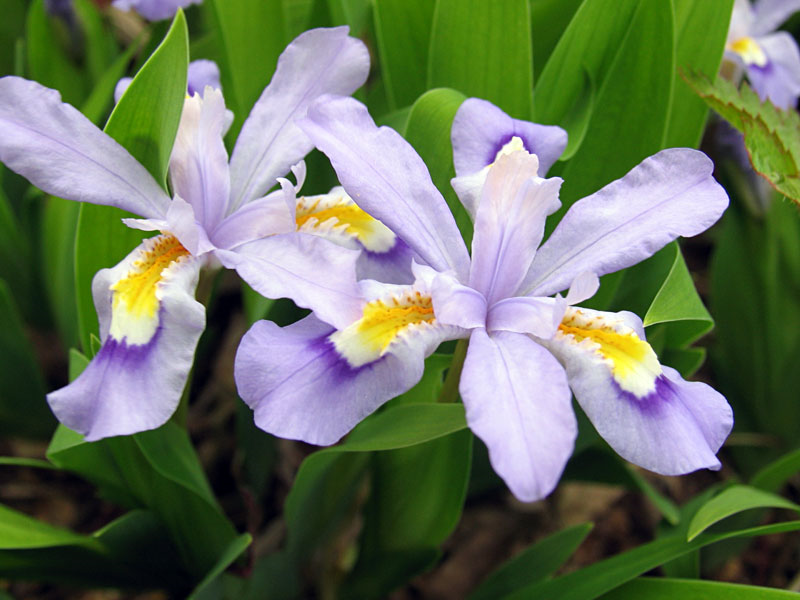Crested Iris
Iris cristata
Click here to download a PDF of this plant information page (for printing).

Sun Exposure: Part Sun, Shade
Season of Interest: Spring, Summer, Fall
Bloom Time: May-June
Bloom Color: Blue, Pink, White
Height: 6 to 9 in.
Spread: 12 oin.
Spacing: 15 in.
Water Needs: Average
Maintenance: Very little
Soil Type: Loam, Sandy
Soil pH: Acidic, Neutral
Soil Drainage: Well drained
Pests: Highly Deer and Rabbit resistant
Diseases: None
Wildlife: Bees, Butterflies, HNummingbirds

Description:
This diminutive mat-forming iris has narrow pointed leaves. The distinctive foliage arises from underground rhizomes and soon forms a lovely groundcover. In spring plants carpet the ground with myriads of small blue-violet irises. This spring beauty prospers in woodland settings with average well drained soils. These plants are typically found growing on rocky wooded slopes, calcareous woodlands, ravines, creek and stream banks, slopes of floodplain forests and on shaded bluffs and ledges.
Iris cristata is a popular wildflower that readily forms colonies. New plants are formed from plump shallow rhizomes that are connected by slender runners.
Short sword shaped leaves arise from the rhizomes. They are gray-green or bluish. Leaves overlap at the base and fold around the adjacent leaf to form a flat fan-like arrangement. The blades tips bend in a delicate arch. In mid-spring masses of small blue-violet blossoms appear. The blooms have a typical iris form with 3 drooping sepals called "falls" and 3 small upright petals called "standards". The falls are marked with a white splotch or signal that surrounds three parallel orange ridges called a crest. For more information see:
plants.ces.ncsu.edu/plants/iris-cristata
Care and Growing Tips:
The crested iris grows best in partly shaded or shaded sites with rich well drained soil. Plants will tolerate more sun if soil is consistently moist. This iris tolerates alkaline soil, rocky soil and dry shade. It is pest resistant except for occasional problems with snails and slugs. Foliage is unpalatable to deer and other herbivores.
In garden situations, these plants benefit from the addition of rich compost or mulch. Lime is also welcome if woodland soils are strongly acidic. Plants can be divided every 3 to 4 years in fall if they become too crowded.